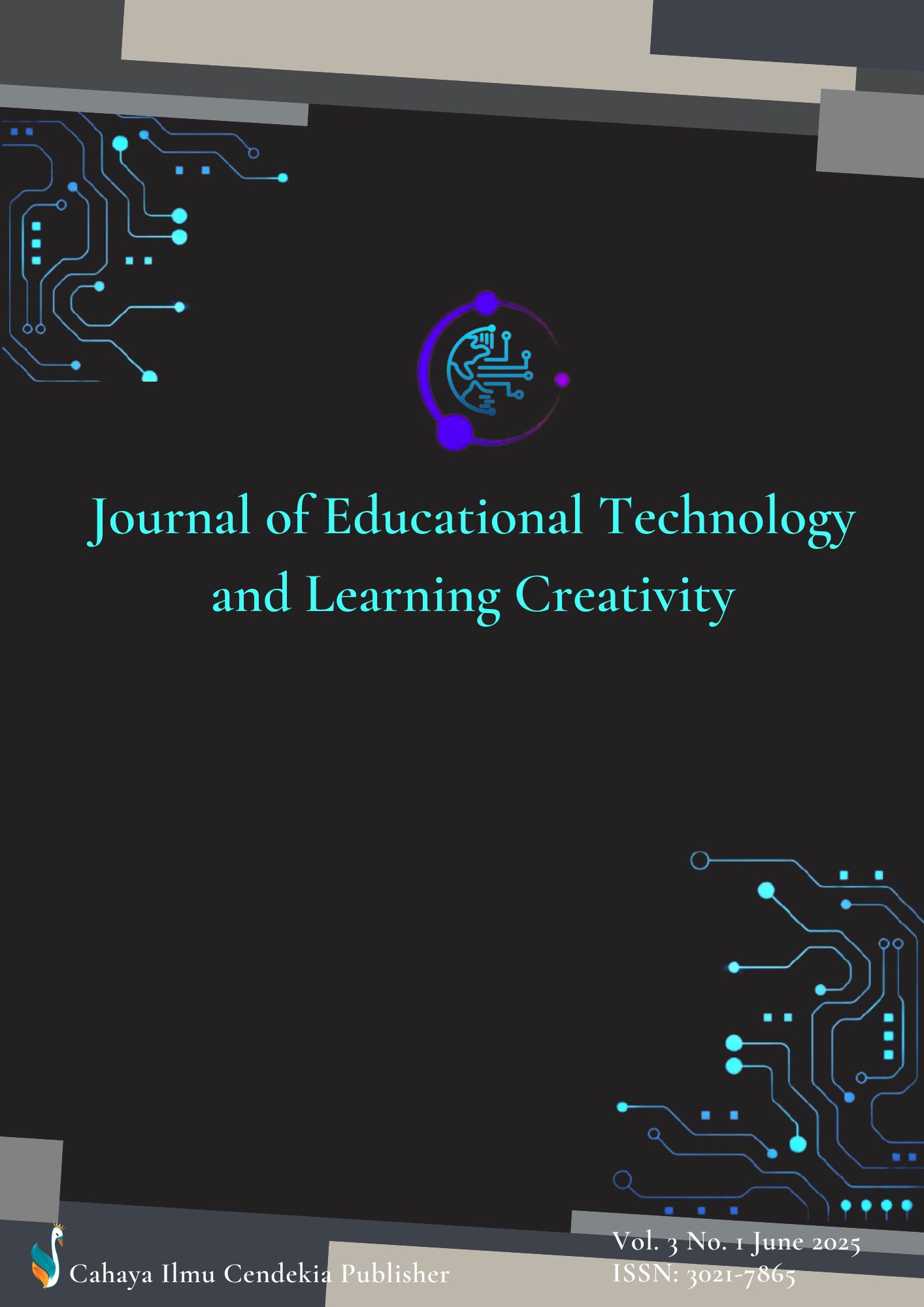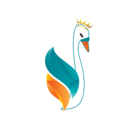Can Private Schools Overcome Promotional Limitations through a 4P-Based Digital Marketing Strategy? A Case Study in Malaysia
Abstract
Purpose of the study: This study aims to describe the strategies used in utilizing technology media used for marketing educational services and solutions to overcome obstacles in developing digital technology as a means of marketing educational services through digital technology by the sultanah engku tun aminah vocational school.
Methodology: This study uses a qualitative approach with a descriptive method. Data collection was carried out through interviews, observations, and document studies. The sources of information in this interview were the Principal, Head of the Learning Resource Center, School Media Manager, Administrative Staff and Teachers. Data analysis using miles and huberman elit using triangulation techniques, namely data triangulation and method triangulation.
Main Findings: The results of this study indicate that the strategy used by the st. john's private high school in utilizing digital technology as a means of marketing educational services has been running well. The strategy used by the st. john's private high school uses a comprehensive approach. The strategy used is to apply 4P (product, price, place and promotion). In addition, the consistent development process on digital media also makes the objectives of the marketing appropriate and effective and efficient. The development process is carried out to upgrade skills for PSB staff by participating in various training.
Novelty/Originality of this study: The novelty of this research lies in the context of the use of digital technology in private educational institutions in Malaysia, especially in the Southeast Asian region which is still rarely used as an object of study.
References
H. Wang, X. Sun, and X. Lu, “Regional Integration , Technological Innovation , and Digital Economy : Evolution and Evidence of the Decarbonization Driving Forces" Yangtze River Delta, 2025.
S. Bouchard, S. Gamache, and G. Abdulnour, “Operationalizing mass customization in manufacturing smes—a systematic literature review,” Sustain., vol. 15, no. 4, 2023, doi: 10.3390/su15043028..
I. Widianingsih, J. J. McIntyre, U. S. Rakasiwi, G. H. Iskandar, and R. Wirawan, "Indigenous sundanese leadership: eco-systemic lessons on zero emissions: a conversation with indigenous leaders in ciptagelar," West Java, vol. 36, no. 2. Springer US, 2023. doi: 10.1007/s11213-022-09606-y.
N. Ahmad, S. Rashid, and Z. Ali, “Investigating primary school teachers’ perceptions about professional development and its impact on students achievement,” J. Soc. Sci. Rev., vol. 3, no. 1, pp. 809–823, 2023, doi: 10.54183/jssr.v3i1.234.
Z. Yaraş and F. Kanatlı Öztürk, “Society 5.0 in human technology integration: Digital transformation in educational organizations,” Int. J. Progress. Educ., vol. 18, no. 1, pp. 458–474, 2022, doi: 10.29329/ijpe.2022.426.26.
B. W. Pratolo and H. A. Solikhati, “Investigating teachers’ attitude toward digital literacy in EFL classroom,” J. Educ. Learn., vol. 15, no. 1, pp. 97–103, 2020, doi: 10.11591/edulearn.v15i1.15747.
C. Audrin and B. Audrin, “Key factors in digital literacy in learning and education: a systematic literature review using text mining,” Educ. Inf. Technol., vol. 27, no. 6, pp. 7395–7419, 2022, doi: 10.1007/s10639-021-10832-5.
F. Sudirjo, “Marketing strategy in improving product competitiveness in the global market,” J. Contemp. Adm. Manag., vol. 1, no. 2, pp. 63–69, 2023. doi:10.61100/adman.v1i2.24
M. T. Nuseir and G. A. El Refae, “Factors influencing the choice of studying at UAE universities: an empirical research on the adoption of educational marketing strategies,” J. Mark. High. Educ., vol. 32, no. 2, pp. 215–237, 2022. doi: 10.1080/08841241.2020.1852467
A. Munsch, “Millennial and generation Z digital marketing communication and advertising effectiveness: A qualitative exploration,” J. Glob. Sch. Mark. Sci., vol. 31, no. 1, pp. 10–29, 2021, doi: 10.1080/21639159.2020.1808812.
A. Hassi and G. Storti, “Globalization and culture: The three H scenarios,” Glob. - Approaches to Divers. vol.3, no. 1, pp. 3–20, 2012, doi: 10.5772/45655..
J. G. Djokoto, P. Pomeyie, and C. A. Wongnaa, “Foreign direct investment in food manufacturing and stages of human development,” Cogent Econ. Financ., vol. 11, no. 2, 2023, doi: 10.1080/23322039.2023.2267738.
V. Gupta, “An empirical evaluation of a generative artificial intelligence technology adoption model from entrepreneurs’ perspectives,” Systems, vol. 12, no. 3, 2024, doi: 10.3390/systems12030103.
P. da S. Finamore et al., “Nigerian politicians, discipline, integrity, character and the rule of law: Application versus financial spending in 2019 federal elections,” J. Chem. Inf. Model., vol. 53, no. February, p. 2021, 2021, doi: 10.13140/RG.2.2.19482.59846.
P. Athanasopoulou et al., “Trends in protein supplement use among non-professional athletes : Insights from a survey in greece,” Nutrients, vol. 17, no. 6, pp. 1–14, 2025. doi:10.3390/nu17061078
U. Ali and V. Tiriveedhi, “High-salt tumor microenvironment : not as bad as it sounds , not as good as it seems,” Cancers, vol. 17, no. 12pp. 1–16, 2025. doi: 0.3390/cancers17121924
B. Aberšek, A. Flogie, and M. Kordigel Aberšek, “Transformation of education: From dehumanization to re-humanization of society,” pp. 18–27, 2023, doi: 10.33225/balticste/2023.18.
M. Kh. A. D. R. Gustiasari, “Analysis of the meaning of hate speech in the instagram account @ lambe _ turah ( pragmatic study ),” vol. 1, no. 1, pp. 176–183, 2025. http://repositori.buddhidharma.ac.id/
M. Aharoni, “Aiming Close to Make a Change : Protest Coverage and Production in Online Media as a Process Toward Paradigm Shift,” 2025.
S. Bader, “Universities , Culture , and Social Media : Enhancing Engagement and Community Through Digital Strategies,” 2025.
Hsu, H. P., Wenting, Z., & Hughes, J. E. (2019). Developing elementary students’ digital literacy through augmented reality creation: Insights from a longitudinal analysis of questionnaires, interviews, and projects. Journal of Educational Computing Research, 57(6), 1400-1435. doi: 10.1177/073563311879451
M. A. S. Khasawneh, “Beyond digital platforms: Gamified skill development in real-world scenarios and environmental variables,” Int. J. Data Netw. Sci., vol. 8, pp. 213–220, 2024, doi: 10.5267/j.ijdns.2023.10.002.
P. Verhalle, “Fighting disinformation : How to measure the impact of pre- and debunking on dutch primary school children ’ s media literacy ?,” Societies, vol. 15, no. 6, pp. 1–12, 2025, doi: 10.3390/soc15060155
G. Giannakopoulos, “Mediating and moderating mechanisms in the relationship between social media use and adolescent aggression : a scoping review of quantitative evidence,” European Journal of Investigation in Health, Psychology and Education, vol. 15, no. 6, pp. 1–14, 2025. doi:10.3390/ejihpe15060098
C. Criste, A. Ioana, and A. Florentina, “Assessing digital performance of public services in the eu : E-governance and technology integration,” Systems, vol. 13, no. 6, pp. 1–30, 2025. doi: 10.3390/systems13060425
A. Gutiérrez-Martín, R. Pinedo-González, and C. Gil-Puente, “ICT and media competencies of teachers. convergence towards an integrated MIL-ICT model,” Comunicar, vol. 30, no. 70, pp. 19–30, 2022, doi: 10.3916/C70-2022-02.
I. Gutmanis, B. L. Coleman, R. G. Maunder, K. Fischer, V. Zhu, and A. McGeer, “Factors associated with impact of event scores among ontario education workers during the Covid-19 pandemic,” Int. J. Environ. Res. Public Health, vol. 21, no. 11, 2024, doi: 10.3390/ijerph21111448.
M. Cockerill, T. Grieveson, S. Bingham, and J. O’Keeffe, “Promoting high achievement for disadvantaged students: Co-designing a school self-evaluation process aligned to evidence of successful leadership practice across five english districts,” Educ. Sci., vol. 15, no. 1, 2025, doi: 10.3390/educsci15010052.
F. J. Crist, D. Berraquero-rodríguez, G. Zamarreño-aramendia, and P. Falc, “Innovation and competitiveness in the territorial brand of the algarve : a comparative analysis of its social media communication and web content,” 2025.
A. Stancu and M. Panait, “Marketing strategy metamorphosis under the impact of artificial intelligence services,” Systems, vol. 13, no. 4, pp. 1–25, 2025, doi: 10.3390/systems13040227.
D. Hancko, A. Majlingova, and D. Kaˇ, “Integrating virtual reality , augmented reality , mixed reality , extended reality , and simulation-based systems into fire and rescue service training : current practices and future directions,” Fire, vol. 8, no. 6, pp. 1–18, 2025. doi: 10.3390/fire8060228
U. Nasri, “Exploring qualitative research: A comprehensive guide to case study methodology,” al-Hikmah J. Stud. Islam, vol. 4, no. 3, pp. 72–85, 2023.
M. Haq, “A comparative analysis of qualitative and quantitative research methods and a justification for adopting mixed methods in social research . the university of bradford institutional repository,” Annu. PhD Conf. Univ. Bradford Sch. Manag., pp. 1–22, 2023.
J. W. Creswell and J. D. Creswell, Research design: qualitative, quantitative, and mixed methods approaches, 4th Editio. Newbury Park: Sage publications, 2017.
T. N. A. Nguyen, T. H. H. Pham, and T. Vallée, “Similarity in trade structure: Evidence from ASEAN + 3,” J. Int. Trade Econ. Dev., vol. 26, no. 8, pp. 1000–1024, 2017, doi: 10.1080/09638199.2017.1331372.
M. S. Hsu, C. L. Yeh, S. J. Cheng, and C. P. Lin, “Integrating digital technologies in dental technician education: a comparative study of national examination in asian countries,” J. Dent. Sci., vol. 20, no. 1, pp. 28–35, 2024, doi: 10.1016/j.jds.2024.10.017.
A. Astalini, D. Darmaji, D. A. Kurniawan, R. Perdana, and A. Andriyanto, “Does the inquiry learning model have an impact on social attitudes and responsible character ?,” J. Ilm. Ilmu Terap. Univ. Jambi, vol. 8, no. 1, pp. 104–116, 2024, doi: 10.22437/jiituj.v8i1.31981.
S. M. Thang, L. K. Lin, N. Mahmud, K. Ismail, and N. A. Zabidi, “Technology integration in the form of digital storytelling: Mapping the concerns of four Malaysian ESL instructors,” Comput. Assist. Lang. Learn., vol. 27, no. 4, pp. 311–329, 2014, doi: 10.1080/09588221.2014.903979.
Y. Yusof, C. C. Chan, A. H. Hillaluddin, F. Z. Ahmad Ramli, and Z. Mat Saad, “Improving inclusion of students with disabilities in Malaysian higher education,” Disabil. Soc., vol. 35, no. 7, pp. 1145–1170, 2020, doi: 10.1080/09687599.2019.1667304.
K. Mokhtari, N. Ghimire, and A. Bentahar, “The influence of media multitasking on moroccan english as a foreign language teachers’ reading habits,” Educ. Sci., vol. 15, no. 5, pp. 1–23, 2025, doi: 10.3390/educsci15050599.
A. Tawiah, “Social media campaign strategies : a case study of political issue framing by 2024 presidential candidates in Ghana,” 2025.
J. Marolla-Gajardo and I. Riquelme Plaza, “Teacher education, diversity, and the prevention of hate speech: ethical and political foundations for inclusive citizenship,” Societies, vol. 15, no. 5, 2025, doi: 10.3390/soc15050139.
B. Himmetoglu, D. Aydug, and C. Bayrak, “Education 4.0: defining the teacher, the student, and the school manager aspects of the revolution,” Turkish Online J. Distance Educ., vol. 21, no. July, pp. 12–28, 2021, doi: 10.17718/TOJDE.770896.
E. F. Crawley, A. Hosoi, G. L. Long, T. Kassis, W. Dickson, and A. B. Mitra, Moving Forward with the New Engineering Education Transformation (NEET) program at MIT - Building community, developing projects, and connecting with industry. 2019. doi: 10.18260/1-2--33124.
A. Syawaludin, Gunarhadi, and P. Rintayati, “Development of augmented reality-based interactive multimedia to improve critical thinking skills in science learning,” Int. J. Instr., vol. 12, no. 4, pp. 331–344, 2019, doi: 10.29333/iji.2019.12421a.
M. E. Eltahir, N. R. Alsalhi, S. Al-Qatawneh, H. A. AlQudah, and M. Jaradat, “The impact of game-based learning (GBL) on students’ motivation, engagement and academic performance on an Arabic language grammar course in higher education,” Educ. Inf. Technol., vol. 26, no. 3, pp. 3251–3278, 2021, doi: 10.1007/s10639-020-10396-w.
D. Yu, “Toward integrated urban observatories : synthesizing remote and social sensing in urban science,” 2025.
K. Zhang, C. Dong, Y. Guo, G. Yu, and J. Mi, “Intelligent digital twin for predicting technology discourse patterns : agent ‑ based modeling of user interactions and sentiment dynamics in deepseek discourse case,” pp. 1–31, 2025.
H. Tian, H. Chen, Y. Zhao, and J. Zhang, “Joint exploitation of physical-layer and artificial features for privacy-preserving distributed source camera identification,” pp. 1–24, 2025.
E. Wianto and H. Toba, “Learners ’ Perception of scientific text layouts design using eye-tracking,” pp. 1–17, 2025.
a. fedorov and g. mikhaleva, “current trends in media and information literacy in research and scientific publications of the early 21st century,” Int. J. Media Inf. Lit., vol. 5, no. 2, pp. 153–163, 2020, doi: 10.13187/IJMIL.2020.2.153.
M. Dennis and T. Harrison, “Unique ethical challenges for the 21st century : Online technology and virtue education,” J. Moral Educ., vol. 00, no. 00, pp. 1–16, 2020, doi: 10.1080/03057240.2020.1781071.
F. Amila and J. Ostadmohamadi, “Implementation of the islamic religious education learning model for deaf students: empirical study in salatiga state special middle schools,” J. Pendidik. Agama Islam Indones., vol. 5, no. 2, pp. 56–64, 2024, doi: 10.37251/jpaii.v5i2.994.
D. Fajri, T. Chandra, and R. Putra, “The influence of brand image and promotion on the decisions of students in stie mahaputra riau with learning interest as intervening variables,” J. Appl. Bus. Technol., vol. 2, no. 3, pp. 223–232, 2021.
Copyright (c) 2025 Pauline Anthony Sigar, Duy Nguyen-Quang, Rizal Hendry

This work is licensed under a Creative Commons Attribution 4.0 International License.
Authors who publish with this journal agree to the following terms:
- Authors retain copyright and acknowledge that the Journal of Educational Technology and Learning Creativity is the first publisher licensed under a Creative Commons Attribution 4.0 International License.
- Authors are able to enter into separate, additional contractual arrangements for the non-exclusive distribution of the journal's published version of the work (e.g., post it to an institutional repository or publish it in a book), with an acknowledgment of its initial publication in this journal.
- Authors are permitted and encouraged to post their work online (e.g., in institutional repositories or on their website) prior to and during the submission process, as it can lead to productive exchanges and earlier and greater citation of published work.


.png)


.png)
.png)
.png)












